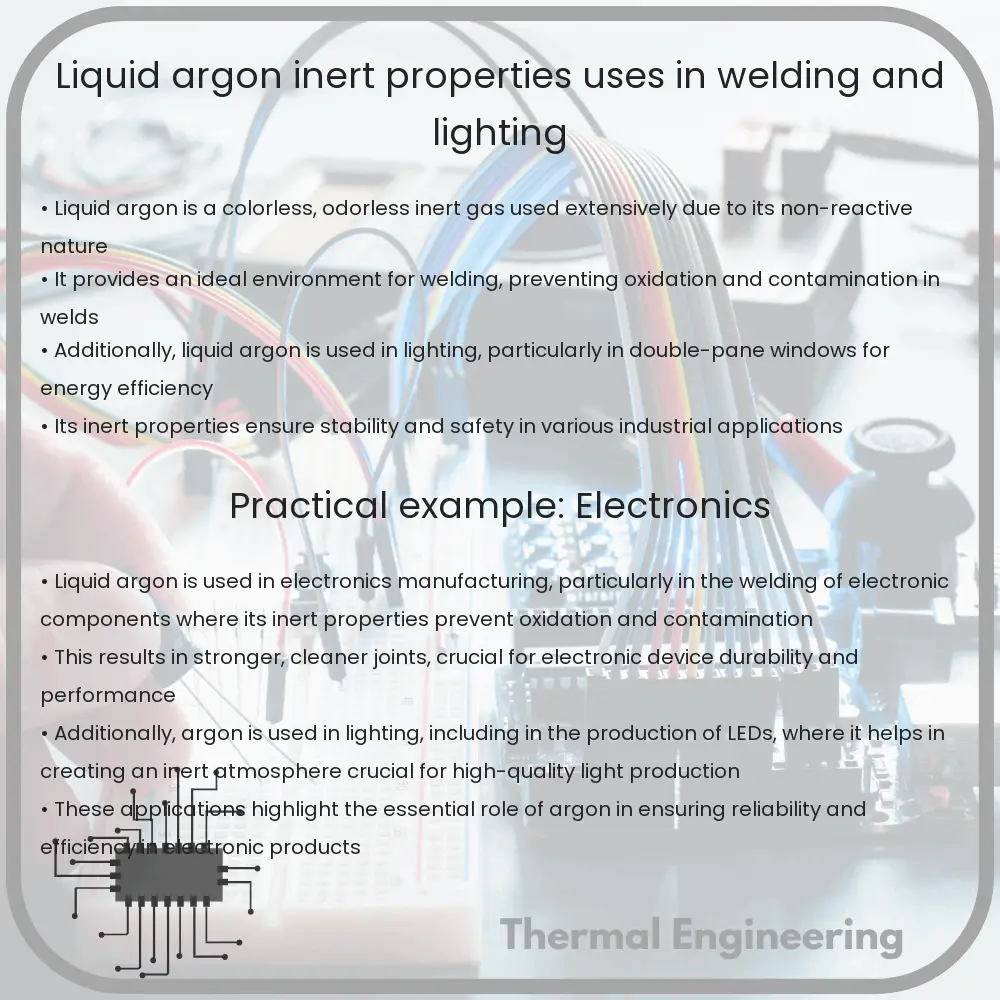Learn about liquid argon’s inert properties and its crucial role in welding and lighting technologies.

Liquid Argon: A Versatile Inert Gas in Engineering
Liquid argon is a substance valued for its inertness and unique physical properties. Argon, a noble gas, is characterized by its lack of chemical reactivity, which makes it an ideal candidate for use in environments where materials must not react with surrounding elements. In its liquid form, argon provides an efficient solution for various applications in engineering, particularly in welding and lighting technologies.
Inert Properties of Liquid Argon
Argon is the third-most abundant gas in the Earth’s atmosphere, making up about 0.93% of it. As a noble gas, argon’s outer electron shell is complete, rendering it largely inert. This means it does not easily form chemical bonds with other elements. Its inertness is crucial in applications that require a non-reactive environment to prevent unwanted chemical reactions.
Uses of Liquid Argon in Welding
- Shielding Gas: In the process of welding, liquid argon is vaporized and used as a shielding gas in gas tungsten arc welding (GTAW) and gas metal arc welding (GMAW). Its purpose is to protect the weld area from atmospheric gases such as oxygen, nitrogen, and water vapor. This protection is crucial as these gases can cause oxidation and other unwanted reactions that weaken the weld.
- Enhancing Weld Quality: Argon helps in stabilizing the electric arc during welding, facilitating a smoother and more controllable process. This results in uniform and cleaner welds, important for maintaining the strength and integrity of the metal.
- Applications: Due to its effectiveness, argon is widely used in welding processes for aerospace, automotive, and manufacturing sectors, where precise and strong welds are necessary.
Uses of Liquid Argon in Lighting
- Gas Discharge Lamps: Liquid argon is also used in lighting, specifically in gas discharge lamps. When electrified, argon emits a pale blue-violet light. Argon-filled lamps are often used for decorative and architectural lighting due to the distinctive color they produce.
- Preserving Filament: In incandescent bulbs, argon is often used along with nitrogen to fill the bulb instead of a vacuum. This helps in preventing the tungsten filament from deteriorating too quickly. Argon serves as a protective atmosphere that reduces the filament evaporation and increases the lifespan of the bulb.
Conclusion and Future Applications
Liquid argon remains a cornerstone in both welding and lighting industries thanks to its inert properties. Its ability to create non-reactive environments is essential in producing effective and reliable results in each application. Beyond these uses, the potential for liquid argon is expanding into areas such as semiconductor manufacturing and medical procedures, where controlled environments are critical. As technology advances, the reliance on fundamental elements like liquid argon illustrates the intersection of natural sciences and engineering innovation. This ongoing evolution predicts a bright future for applications using this versatile gas.